While the average camera enthusiast may not be familiar with the name Frezzi, those in the world of electronic news gathering (ENG) and broadcasting most certainly are. Frezzi lighting products are often spotted atop professional video cameras and their daylight balance HMI products are among the more popular sun gun fixtures available in the market.

Copyright Byron Atkinson
With the growth in HDSLRs among broadcasters, Frezzi has taken an integrated approach and offers platforms to its customers that address the need for lighting, power and stabilization. This integrated approach is not new for Frezzi: It is consistent with their product offerings for traditional video cameras. But they are one of the few companies offering this kind of integration solution for HDSLR users, and in doing so, may undoubtedly find their product have appeal to a far broader market.
Kevin Crawford of the New Jersey-based company provides us with an interesting look at the company and its latest products.
Q: Frezzi is probably best known for its lighting products. What sets Frezzi apart from the other lighting companies?
KC: Frezzi has been innovating and designing portable lighting and power packs for television news since the beginnings of terrestrial broadcasting. My grandfather, James Frezzolini, founded the company while working as the Chief News Reel Cameraman at WPIX Channel 11 here in New York City. As a skilled machinist and inventor, he developed the world’s first portable lights for use with 16mm Bell and Howell Film cameras used for news at that time. It all started there and continued for the TV news industry with a broad range industry firsts, including lighting, power packs and Frezzolini 16mm film cameras.
We offer photographers and videographers their choice of lighting products; tungsten, HMIs, and LED replacement lamps. Frezzi is the only company offering a line of highly portable and lightweight HMIs, from our 15W Micro Sun Gun to the 400W HMI Super Sun Gun. They all can be DC battery-powered, making them great field lights. Additionally, Frezzi lighting products are made and serviced here in the USA.
Q: What made Frezzi decide to enter the market with HDSLR compatible products?
KC: It was an easy decision for us. We have been providing Frezzi Mini-Fill lights as continuous light sources to the still photography market for years. We actually saw a growing number of still photographers using tungsten fill lighting rather than flash units for some of their glamour and wedding work. This eliminated harsh flash shock while utilizing continuous lighting for highlighting and accenting. Also, you cannot replicate the warmth and full color spectrum of a good tungsten lamp source.
Given the fact that our products are designed to be portable, support and improve the handheld camcorder shooting experience, expanding the Frezzi product line to include HDSLRs was a natural. Since some of the products we offer for HDSLRs are adaptations of products originally used for and proven to work with professional broadcast cameras.
Q; How important is the lighting component of the HDSLR rig or system? What advantage does the Frezzi approach offer?
KC: The lighting is extremely important even though the HDSLR can shoot at low light. We’ve seen some good available light video, but when a subject properly lit [with a Frezzi,] you’ll see a dramatic improvement in image quality. The image will be more vivid and the colors will really “pop” as the light will help to separate the subject from the background. You’ll see that “sparkle in the eyes” and bring your subject to life. Being low light sensitive is good with the HDSLR because you can gently wash your subject with accent lighting by adjusting the dimmer control just enough to bring up the warm, golden skin tones and fully saturated colors while having the camera’s sensor working in the “sweet spot” for an ideal image. Our rig has the advantage of the light being powered by a Frezzi battery on the back of the shoulder support which also serves as a counterbalance as well as a power source for those using a monitor and/or other accessories.
Q: You have two types of rigs available: one which is hand held and the other which is shoulder mounted. Can you tell us about them?
KC: Customers soon find out HDSLRs are heavy and cumbersome to shoot video, creating painful wrist and arm fatigue over time. This makes it difficult to acquire smooth, professional-looking video when shooting for extended periods of time.
The Frezzi Hand Held Rig is a multi-purpose stabilizer and camera support arm. It mounts the HDSLR to the support arm, on the opposite side; it has a handle with battery mount. This configuration is well-balanced and easy to handle because the weight of the camera, lens and other accessories is distributed along the support arm. The Power Block battery on the handle

Image courtesy of Frezzi
acts as a counter-balance and power source for the Frezzi light or any other 12V accessory. As you know, having a balanced rig helps keep the camera steady when doing handheld and roving shots.
The Stable-Cam Shoulder Rig is a full HDSLR platform for camera, battery, and light with multiple cold shoe mounts for additional accessories like monitors, wireless mics and audio recorders. One big design concern for us was to create the Stable-Cam as a “tool-less” assembly and also have the ability to fold up small enough to fit in a carry-on. When deployed, the Stable-Cam is fully adjustable to different body types and every joint articulates. One of the
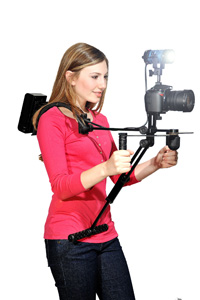
Image courtesy of Frezzi
advantages the Stable-Cam offers is a lower waist boom which provides an additional point of contact for stabilization and relieves the weight from handholding. You can easily adjust focus and camera settings using the Stable-Cam as 100% of the weight is balanced on your shoulder and waist. Many users refer to it as a “Human Tripod” since it offers the ability to shoot for hours without any wrist or arm fatigue while holding the shot smooth and steady. Again, our high capacity batteries which can power the Frezzi light, monitor or any other 12V accessory are integral to the system.
Using one of the Frezzi HDSLR Stabilizer rigs results in the camera and accessories being both balanced and more manageable which makes for smooth and professional looking images and video clips.
We offer both stabilizers in “kit” configurations which include the Stabilizer, a MINI-Fill and a battery. There are different kit configurations available with MSRPs between $1150 and $1950.
Q: Your mini “sun gun” can utilize a tungsten or LED bulb. What factored into your decision to offer both?
KC: The Frezzi Mini-Fill Dimmer is an industry standard video light used by tens of thousands of professional broadcasters around the world. It accepts any standard MR-16 lamp, with a GX5.3 socket base, up to a 100 Watts. With the wide proliferation and availability of LED MR-16 type replacement lamps, LEDs are a logical choice when lower power consumption and long run time are considerations. LED MR-16 lamps are “direct” lamp plug-in replacements, suitable for any MR-16 fixture. So it’s a simple evolution of technology that has made this possible. Being able to switch back and forth between Tungsten and LED has its advantages based on shooting and lighting conditions as well as the photographer’s intent.
Q: What kind of run times are you estimating with the batteries that come with the systems?
KC: Run times depend on the wattage of lamp and accessories being powered, but in general when using our Hand Held Rig and Power Block battery, the Frezzi Mini-Fill Dimmer with 35W Tungsten lamp will run for almost two hours continuously; with an 8W LED replacement lamp, the run time jumps to over eight hours of continuous light at 5500 degrees daylight color temperature.
On our Stable-Cam powered rig which uses a more robust battery, the 35W Tungsten Mini-Fill Dimmer will run almost 2.8 hours With an 8W LED replacement lamp will run for over 12 hours.
But keep in mind, with the addition of a LCD monitor and other accessories that require power, the battery run time will decrease.
Q: Can your HMI units be fitted on the HDSLR rigs, and if so are there any advantages to using them over tungsten and LEDs?
Frezzi HMIs can be fitted to the HDSLR rigs with ease. Frezzi lighting has standardized shoe mounting and power connectors making substitution simple. The advantage of HMI is their high output at daylight color temperature 5600K. When shooting outdoors in direct sunlight or when the subject is back lit, HMIs are unequaled among continuous lighting products in their ability to light a subject effectively to eliminate shadows. Tungsten lamps need to be color-corrected from 3200K to 5600K which will reduce their light by approximately one f-stop. Most LED sources at this time do not have enough throw and fall off very rapidly to be effective outdoors in direct daylight.
Some of our customers are using our 15W HMIs on HDSLR rigs as a fill-in light, and our 24W HMI stand mounted, as key and back lighting. Being all battery-powered, small and extremely portable makes them great as HDSLR portable light kits. While these customers are using the lights as portable lightings kits with “HDSLR for News” crews, documentary work and ENG crews, we believe they will be attractive alternatives for other segments of the HDSLR market.
Frezzi HDSLR support and light products are available now. For more information on these and other Frezzi products visit: http://www.frezzi.com or call (800) 345-1030.
Thanks to Kevin and James Crawford of Frezzi.
Disclosure: No consideration has been received in connection with this blog entry, nor has any manufacturer and/or retailer offered any consideration.
All images in this entry and in this blog are copyrighted and used with permission.
What’s in our Sister blogs:
HDSLRS-n-motion: HDSLR Cameras: Products to Watch For
Byron Says: Story Telling



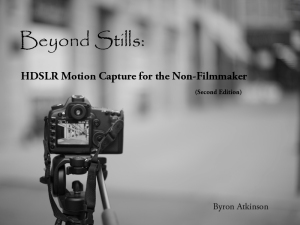






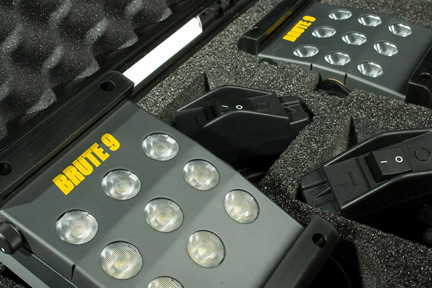

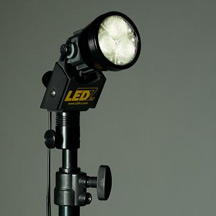





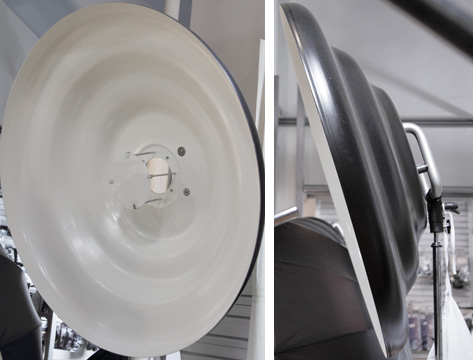
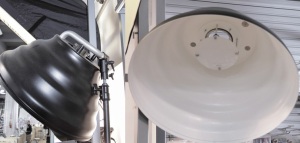




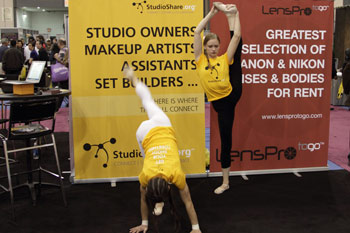
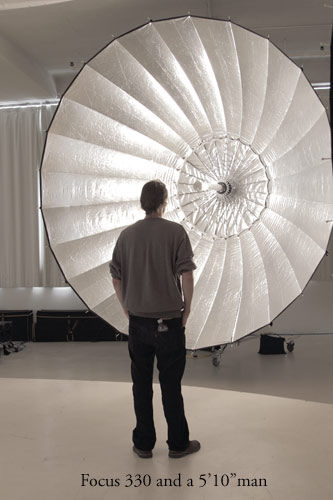
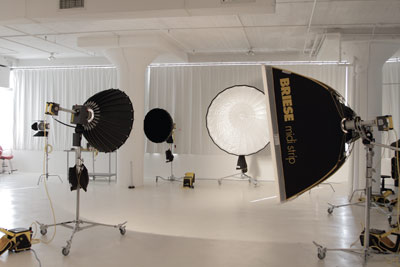
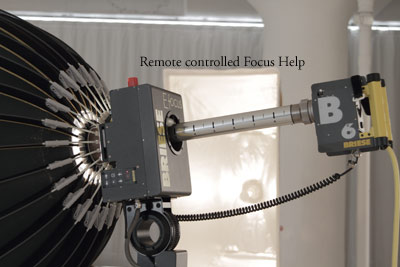
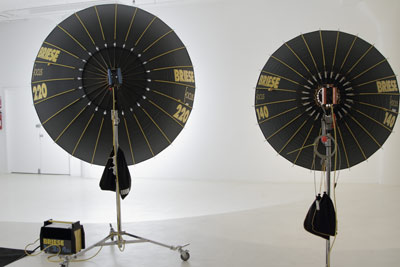




 Basically a “Kit” consists of a 20 x27’ soft box built around a light bulb: Take the bulb out, remove the cord, collapse the unit and you are ready to go. Now let me “be perfectly frank;” for $42 you shouldn’t expect and don’t get premium brand construction or finish: The plastic base plate assembly is not the most elegant solution in terms of opening for mounting to a stand and/or tightening it when mounted, and I found myself struggling a bit to get the baffle evenly attached to the box as well. What you do get for $42 however, once you get the light attached to the stand and the baffle on snugly, is a light that works overtime and the comfort of knowing that if you damage the bulb or break the box, replacing either won’t set you back a king’s ransom. And most importantly, you get a light which can be used for video or still work and does not generate the kind of heat that can make a set uncomfortable. If there are drawbacks, the biggest is that the light is not dimmable. One solution might be to buy a few bulbs of different wattages for flexibility or place additional diffusion material on the front. Another drawback is that even with the baffle, there is a “hot spot” in the center of the box resulting from the bulb: You may see it in the catch-lights. The biggest downside is that the 85 watt “spiral” bulb is huge! If you buy these lights, feel free to discard the box the entire assembly ships in as the soft box, cord, baffle and adjustment lever come in a nice black canvas case, but you will want to keep the box and form the bulb comes in. Drawbacks not withstanding, yes indeed, I love these lights!
Basically a “Kit” consists of a 20 x27’ soft box built around a light bulb: Take the bulb out, remove the cord, collapse the unit and you are ready to go. Now let me “be perfectly frank;” for $42 you shouldn’t expect and don’t get premium brand construction or finish: The plastic base plate assembly is not the most elegant solution in terms of opening for mounting to a stand and/or tightening it when mounted, and I found myself struggling a bit to get the baffle evenly attached to the box as well. What you do get for $42 however, once you get the light attached to the stand and the baffle on snugly, is a light that works overtime and the comfort of knowing that if you damage the bulb or break the box, replacing either won’t set you back a king’s ransom. And most importantly, you get a light which can be used for video or still work and does not generate the kind of heat that can make a set uncomfortable. If there are drawbacks, the biggest is that the light is not dimmable. One solution might be to buy a few bulbs of different wattages for flexibility or place additional diffusion material on the front. Another drawback is that even with the baffle, there is a “hot spot” in the center of the box resulting from the bulb: You may see it in the catch-lights. The biggest downside is that the 85 watt “spiral” bulb is huge! If you buy these lights, feel free to discard the box the entire assembly ships in as the soft box, cord, baffle and adjustment lever come in a nice black canvas case, but you will want to keep the box and form the bulb comes in. Drawbacks not withstanding, yes indeed, I love these lights!


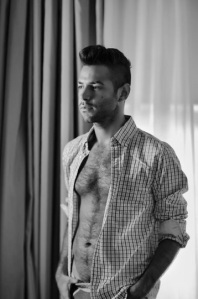
 While I have several light stands of different heights, the stands I most commonly use when traveling and on location are eight-foot stands. The promise of less bulk has tremendous appeal to me and most location photographers, so with that in mind I ordered a pair of Manfrotto 306B Stacker Stands from the
While I have several light stands of different heights, the stands I most commonly use when traveling and on location are eight-foot stands. The promise of less bulk has tremendous appeal to me and most location photographers, so with that in mind I ordered a pair of Manfrotto 306B Stacker Stands from the

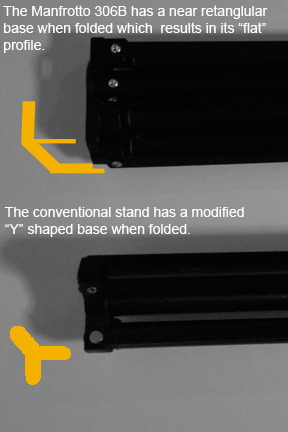
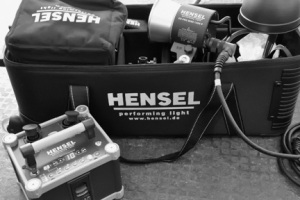 If I were in the market for a 1200 w/s battery pack today, there is no doubt in my mind that the Hensel
If I were in the market for a 1200 w/s battery pack today, there is no doubt in my mind that the Hensel  The Porty Lithium 12 is well made. The fit, finish and extent of “environmental” sealing/protection is excellent. The controls are as intuitive as it gets. The squat profile of the unit and wood handle suggest it is substantial in weight, but when you pick it up don’t be surprised if you marvel, as I did, at how light the unit actually is. I was also keenly aware at the lightness of the Pro Mini 1200P head. Hensel officially list the weight of the head at 5.7 pounds, but that includes the 16 foot cord. The head alone weighs in the vicinity of three pounds. Hensel wisely designed the unit with a detachable cord, which is of great assistance for packing and storage, and is a feature I would like to see more manufacturers adopt. The head comes with a clear dome and a protector cap. The light is clean and in my opinion on par with that of other premium brand products. In my testing, the units recycled as fast as Hensel claims at full power.
The Porty Lithium 12 is well made. The fit, finish and extent of “environmental” sealing/protection is excellent. The controls are as intuitive as it gets. The squat profile of the unit and wood handle suggest it is substantial in weight, but when you pick it up don’t be surprised if you marvel, as I did, at how light the unit actually is. I was also keenly aware at the lightness of the Pro Mini 1200P head. Hensel officially list the weight of the head at 5.7 pounds, but that includes the 16 foot cord. The head alone weighs in the vicinity of three pounds. Hensel wisely designed the unit with a detachable cord, which is of great assistance for packing and storage, and is a feature I would like to see more manufacturers adopt. The head comes with a clear dome and a protector cap. The light is clean and in my opinion on par with that of other premium brand products. In my testing, the units recycled as fast as Hensel claims at full power. The Lithium 12 battery/cassette weights 2.5 pounds; the Porty Premium battery and drawer weighs nearly 9 pounds. For the traveling photographer who is concerned about weight of gear, the weight differential, particularly if one needs to carry multiple batteries, is significant. If the weight of the Lithium 12’s battery is the upside, the downside of the lithium technology is that the batteries are expensive: A second lithium battery/cassette runs over $500 USD. To be fair, the price of an extra Hensel lithium battery/cassette (2.5 lbs) is in the same range as a second battery and drawer (11.4lbs) for a Profoto B2.
The Lithium 12 battery/cassette weights 2.5 pounds; the Porty Premium battery and drawer weighs nearly 9 pounds. For the traveling photographer who is concerned about weight of gear, the weight differential, particularly if one needs to carry multiple batteries, is significant. If the weight of the Lithium 12’s battery is the upside, the downside of the lithium technology is that the batteries are expensive: A second lithium battery/cassette runs over $500 USD. To be fair, the price of an extra Hensel lithium battery/cassette (2.5 lbs) is in the same range as a second battery and drawer (11.4lbs) for a Profoto B2.
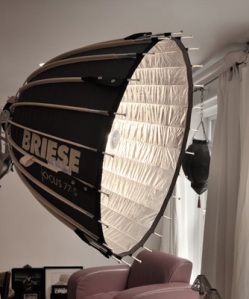
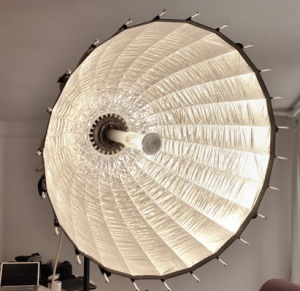



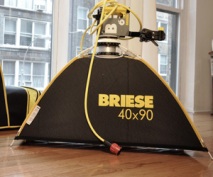
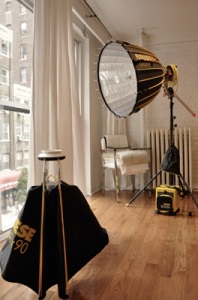


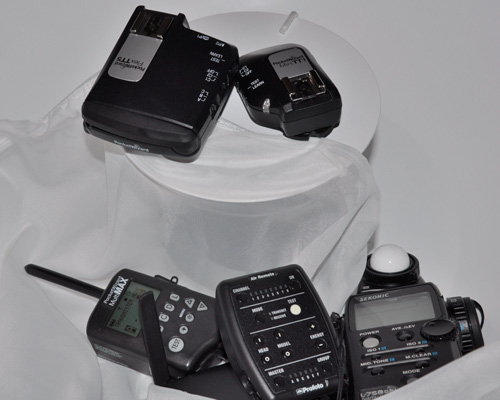 I have been intending to write about the new PocketWizard products for the past several weeks, but every time I’ve scheduled an outdoor shoot, we’ve been rained out. Hopefully the weather will cooperate this weekend and I will be able to finally shoot the project that has been thrice postponed and put the MiniTT1 and FlexTT5s through their paces as I normally would use them and share my experience. I’ll warn you now since I will be shooting on the streets of New York, that I won’t be going for distance records with respect to flash placement.
I have been intending to write about the new PocketWizard products for the past several weeks, but every time I’ve scheduled an outdoor shoot, we’ve been rained out. Hopefully the weather will cooperate this weekend and I will be able to finally shoot the project that has been thrice postponed and put the MiniTT1 and FlexTT5s through their paces as I normally would use them and share my experience. I’ll warn you now since I will be shooting on the streets of New York, that I won’t be going for distance records with respect to flash placement.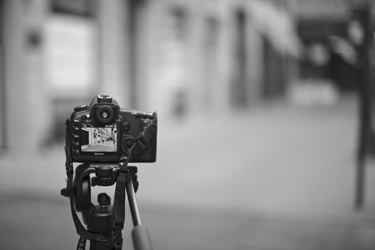
 It is also an indicator that the Pro Air system is becoming a standard wireless protocol for Profoto products. As a user of Profoto battery packs and ComPacts, I was particularly interested in the D1 system as the specs seemed to address my issues with the current generation of monolights.
It is also an indicator that the Pro Air system is becoming a standard wireless protocol for Profoto products. As a user of Profoto battery packs and ComPacts, I was particularly interested in the D1 system as the specs seemed to address my issues with the current generation of monolights.


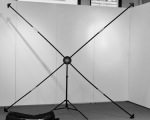
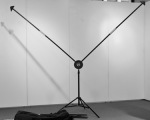


 With the availability of full frame dslrs from Canon, Nikon and Sony, there has been a lot of discussion, both on Internet forum boards and in print about camera pricing and in particular, the pricing of “professional” dslrs. John Rettie in an article called
With the availability of full frame dslrs from Canon, Nikon and Sony, there has been a lot of discussion, both on Internet forum boards and in print about camera pricing and in particular, the pricing of “professional” dslrs. John Rettie in an article called 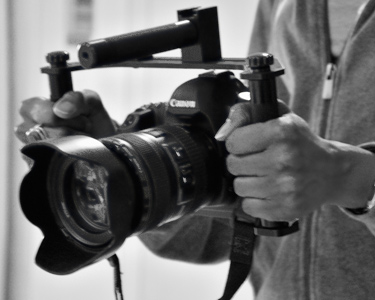
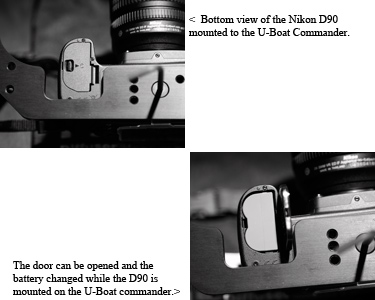 For those shooting with the Nikon D90, the battery door of the camera is also fully accessible when it is mounted to the Commander base.
For those shooting with the Nikon D90, the battery door of the camera is also fully accessible when it is mounted to the Commander base.
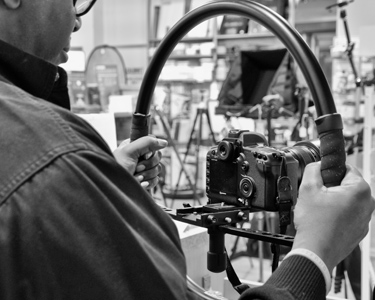 What do you get when you mount a camera inside a steering wheel? You get a Fig Rig!! I keep hearing the Joni Mitchell song “Big Yellow Taxi” every time I think about the Fig Rig! People may find the concept of walking around holding a “steering wheel” in front of you, strange but I have to tell you it works. The Fig Rig offers incredible freedom of movement. The two handed navigation if you will, results in tremendous stability and smooth shooting. The body acts as the shock absorber and does not transfer the jarring movement to the Fig Rig. The wheel itself can accommodate add on’s such as video lights or a microphone using the optional Fig Rig clamp.
What do you get when you mount a camera inside a steering wheel? You get a Fig Rig!! I keep hearing the Joni Mitchell song “Big Yellow Taxi” every time I think about the Fig Rig! People may find the concept of walking around holding a “steering wheel” in front of you, strange but I have to tell you it works. The Fig Rig offers incredible freedom of movement. The two handed navigation if you will, results in tremendous stability and smooth shooting. The body acts as the shock absorber and does not transfer the jarring movement to the Fig Rig. The wheel itself can accommodate add on’s such as video lights or a microphone using the optional Fig Rig clamp.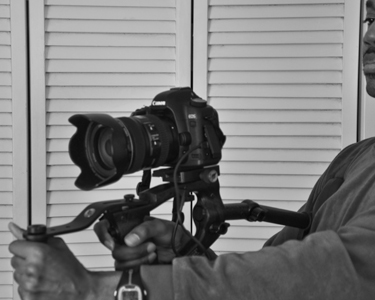


 Ask most people about on-camera lighting options for their dslr, and the default response is usually a dedicated flash unit.
Ask most people about on-camera lighting options for their dslr, and the default response is usually a dedicated flash unit.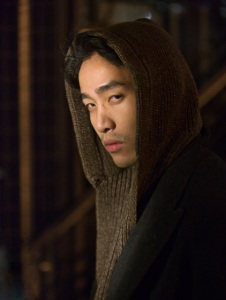




You must be logged in to post a comment.